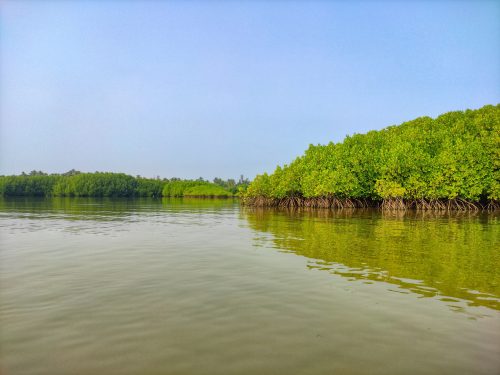Mangroves: Discussing Their Vital Role in Coastal Ecosystems and Climate Change Mitigation

Photo Credit : Jadwiga Figula Photography/Getty Images
Mangroves, those resilient coastal trees with their roots submerged in brackish waters, play a crucial role in maintaining the health of our planet. Let’s explore more into their significance and how they contribute to climate change mitigation.
- Carbon Sequestration and Storage
Mangroves are true carbon warriors. They store significant amounts of carbon in their sediments, acting as natural carbon sinks. As organic matter accumulates in the soil beneath their roots, mangroves sequester carbon dioxide from the atmosphere. This process helps mitigate the impact of greenhouse gases on our climate.
- Coastal Protection and Erosion Control
These remarkable trees serve as a natural barrier against coastal erosion, storm surges, and rising sea levels. Their intricate root systems stabilize shorelines, preventing soil erosion and safeguarding nearby communities. By acting as a buffer, mangroves protect coastal habitats and infrastructure.
- Biodiversity Hotspots
Mangroves are bustling ecosystems teeming with life. They provide nurseries for various marine species, including fish, crabs, and shrimp. These sheltered environments allow juvenile organisms to grow and thrive, contributing to the overall health of coastal ecosystems.
- Water Filtration and Sediment Retention
The dense tangle of mangrove roots acts as a natural filter, purifying water by trapping pollutants and sediments. This filtration process benefits both marine life and human communities that rely on clean water.
- Adaptation to Sea Level Rise
As sea levels rise due to climate change, mangroves demonstrate their resilience. Their aerial roots facilitate vertical growth of the land, allowing them to keep pace with rising waters. In some cases, mangroves even help build new land areas.
- Economic and Social Benefits
Mangroves contribute to local economies by supporting fisheries and providing timber and other resources. Coastal communities depend on these ecosystems for sustenance, livelihoods, and cultural practices.
In summary, mangroves are not just trees, they are guardians of our coasts. Their preservation is essential for climate change adaptation and mitigation. Let us recognize their value and work collectively to protect and restore these vital coastal habitats.

Photo Credit : Vishwasa Navada K/Unsplash

